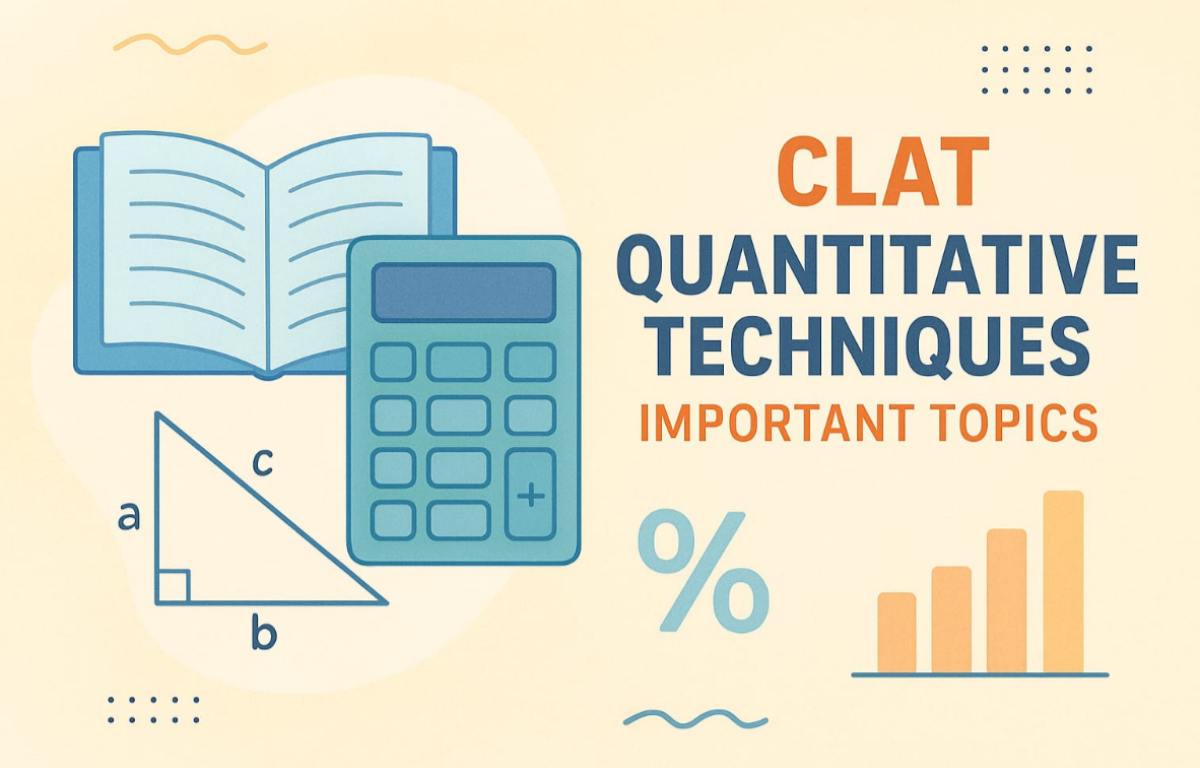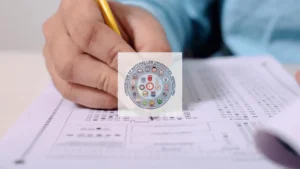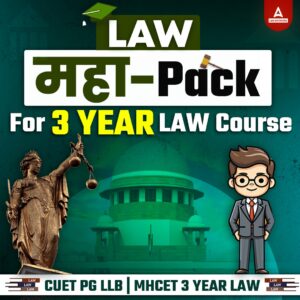CLAT Quantitative Techniques Important Topics: When it comes to cracking the CLAT exam, the Quantitative Techniques segment often serves as a make-or-break section for students attempting to appear for the CLAT examination. This section assesses not only numerical ability but also logical and analytical ability. While most math tests require math skills, CLAT does not require advanced math. Instead, CLAT tests your understanding of fundamental concepts applied to a realistic legal and logical scenario. The questions include data interpretation, ratios, percentages, and probability, and are timed so that you can utilize speed and accuracy. With a strategic study plan in place, a student can master this section with relative ease. With the right practice, shortcuts, and clarity around concepts, CLAT aspirants can achieve significantly higher scores in Quantitative Techniques.
CLAT Quantitative Techniques Exam
Quantitative Techniques is a section included in the CLAT exam to measure the competency of candidates to interpret numbers, graphs, and data-driven situations logically. The CLAT are conducted every year by the Consortium of National Law Universities (NLUs) for admissions into law programs (undergraduate and postgraduate) in the top NLUs across India. Those eligible for CLAT UG are candidates who have passed Class 12 or have appeared in Class 12 (of any stream). Though quantitative techniques may seem challenging, it will test only basic mathematical concepts up to Class 10 standard material. Therefore, with regular practice and confidence, every aspirant will be able to do well, regardless of whether the student is a science, commerce, or arts student.
CLAT Quantitative Techniques Syllabus 2026
The CLAT Quantitative Techniques syllabus is not vast, but it requires certainty of understanding and practice. Most of the topics are elementary mathematics (Class 10 level). The syllabus consists mainly of: Ratios and Proportions, Percentages, Profit and Loss, Time and Work, Time, Speed, and Distance, Algebra, Averages, Mensuration, Probability, and Statistics. The use of Data Interpretation of the information given in either tables or graphs, or charts in the syllabus is a large component. The questions will often consist of a short set of questions or a graph or a passage of part or whole of the numerical data, followed by a few objective-type questions. The students should revisit the NCERT Class 10 Mathematics Basic concepts in order to practice questions and solidify their understanding.
| CLAT Quantitative Technique Syllabus 2026 | |
| Topics Covered | Details |
| Basic Arithmetic | Addition, Subtraction, Division, Multiplication, Number System, Decimals, Fraction and Fractions, Approximation, Roots, Surds and Indices, HCF and LCM, Average, Ratio and Proportion, Time and Work, Simplification, Logarithms, and Functions. |
| Commercial Mathematics | Percentage, Interest Calculation and Discounts, Partnership, Profit, Loss, etc. |
| Modern Mathematics | Clocks and Calendar, Probability |
| Mensuration | Measurement, Volume, and Geometry. |
| Algebra | Basic Algebra and Its Applications |
CLAT Quantitative Techniques Important Topics
The Quantitative Techniques Syllabus 2026 in CLAT is not as long; however, it is essential for scoring heavily. The questions based on basic Math from Class 10 give both Art and Science students equal opportunity to attempt in an easy manner. The actual challenge is ensuring that you are quick and accurate when attempting the data-based questions. By knowing the vital topics, you will be able to save time on the sections you know, focus on the high-scoring areas, and make your preparations better. With the right practice, this section can be a scoring section for those preparing for CLAT.
- Ratios, Proportions & Averages: Frequently tested in data-based problems.
- Percentages & Profit-Loss: Essential for solving real-life application questions.
- Time, Speed & Distance, Time & Work: Commonly used for logical problem-solving.
- Mensuration & Geometry: Questions based on areas, volumes, and shapes.
- Probability & Statistics: Useful for interpreting case-based data.
- Data Interpretation: Tables, bar graphs, and pie charts are heavily focused.
Why Knowing the CLAT Quantitative Techniques Important Topics is Essential?
The significant topics of CLAT Quantitative Techniques are very important for effective preparation. The syllabus can, of course, be all-encompassing with different subject areas containing different topics, yet not all topics hold the same weightage or sometimes significance. For example, topics such as Data Interpretation, Percentages, Ratios, and Averages are asked more frequently than some of the topics in Geometry, Mensuration, & Probability, etc.
When students are able to identify and focus on the important topics, it allows them to focus their preparation “smartly” instead of spreading preparation evenly over all topics. It creates confidence in readiness for the exam because they already have a perception of the types of questions to expect. Additionally, if students are studying the important topics, they develop speed and a variety of methods, two critical elements of success in passing CLAT & getting a good score. Key Benefits of Knowing Important Topics:
- Saves time in preparation
- Improves focus on high-weightage areas
- Boosts speed and accuracy
- Increases confidence in the exam hall
Best Toppers’ Suggested Preparation Strategy for CLAT Quantitative Techniques
Most of the Toppers who have successfully passed the CLAT Quantitative Techniques recommend starting with a strong foundation in NCERT Class 9 and 10 Mathematics. Students can also check the best preparation tips for the upcoming CLAT Exam.
- Start with NCERTs: Revise Class 9 and 10 Mathematics to strengthen basic concepts and formulas.
- Focus on Data Interpretation: Practice tables, graphs, and charts daily as they carry maximum weightage.
- Create a Formula Sheet: Keep a handy sheet of important formulas and shortcuts for quick revision.
- Solve Previous Year Papers: Analyze PYQs to understand the type of questions and difficulty level.
- Practice Sectional Mocks: Attempt timed practice tests to improve speed and accuracy.
- Follow Smart Time Management: In the exam, solve easy questions first, then attempt the lengthy ones.
- Consistent Practice: Dedicate at least 30–40 minutes daily to this section for steady improvement.









 CLAT Colleges 2026 List: Check Top Unive...
CLAT Colleges 2026 List: Check Top Unive...
 CLAT Sample Papers 2026 Released by Cons...
CLAT Sample Papers 2026 Released by Cons...
 Download CLAT Previous Year Question Pap...
Download CLAT Previous Year Question Pap...







